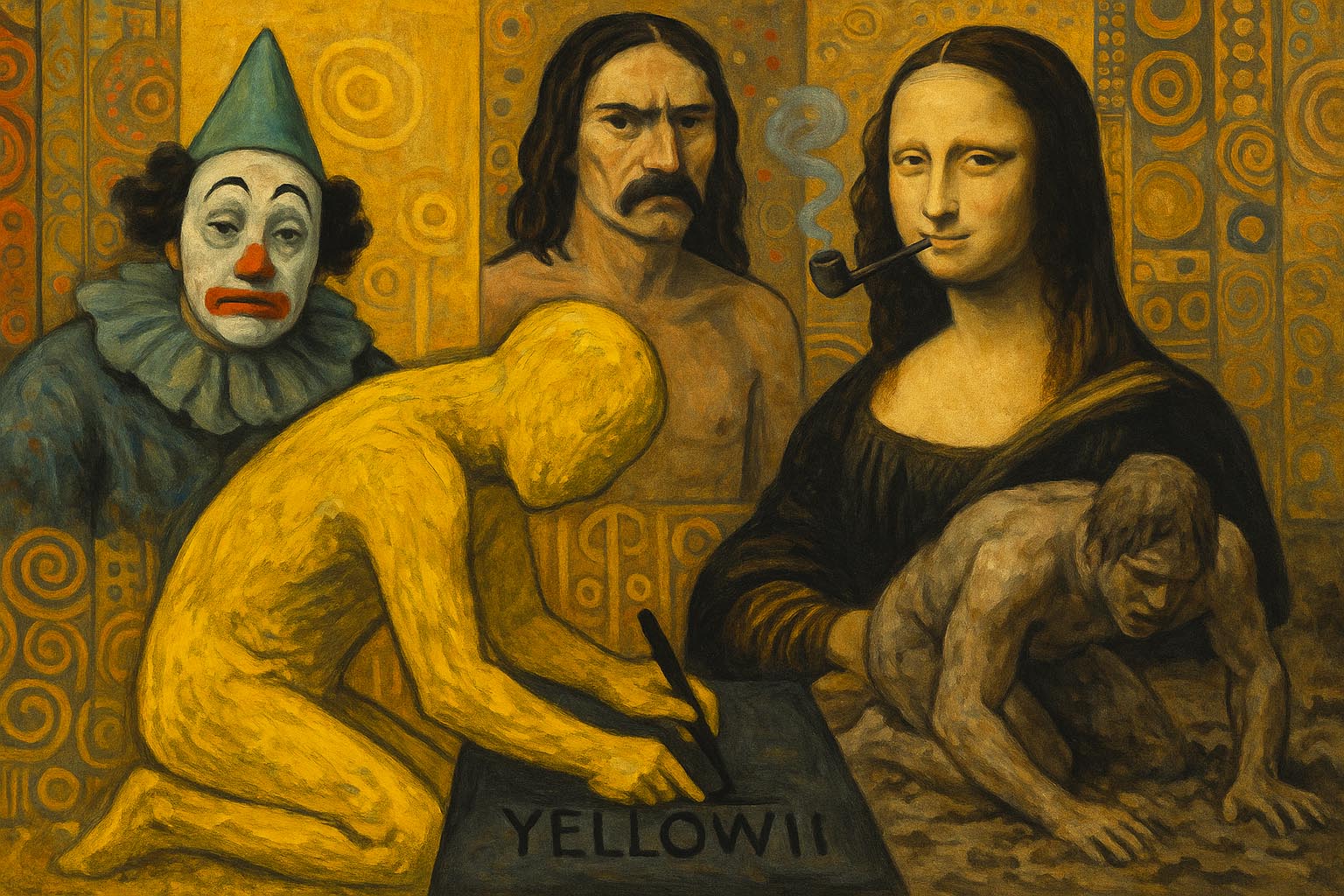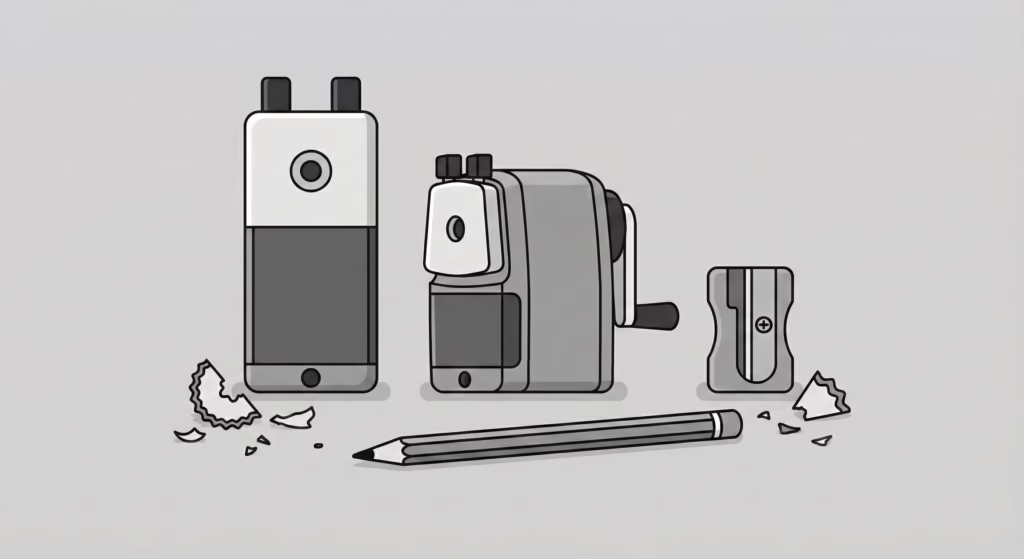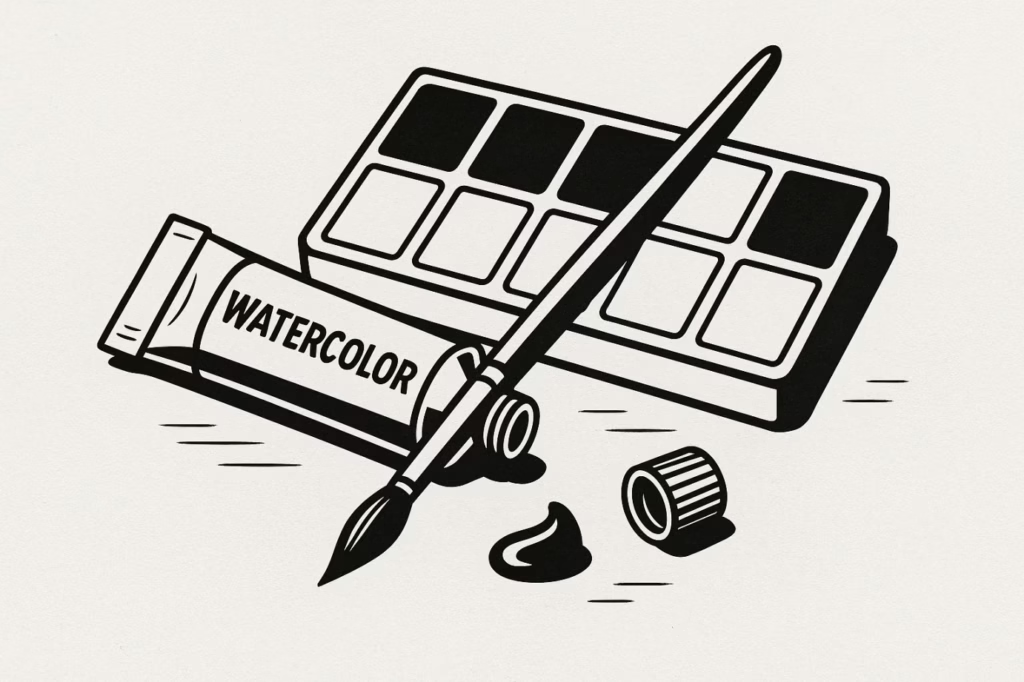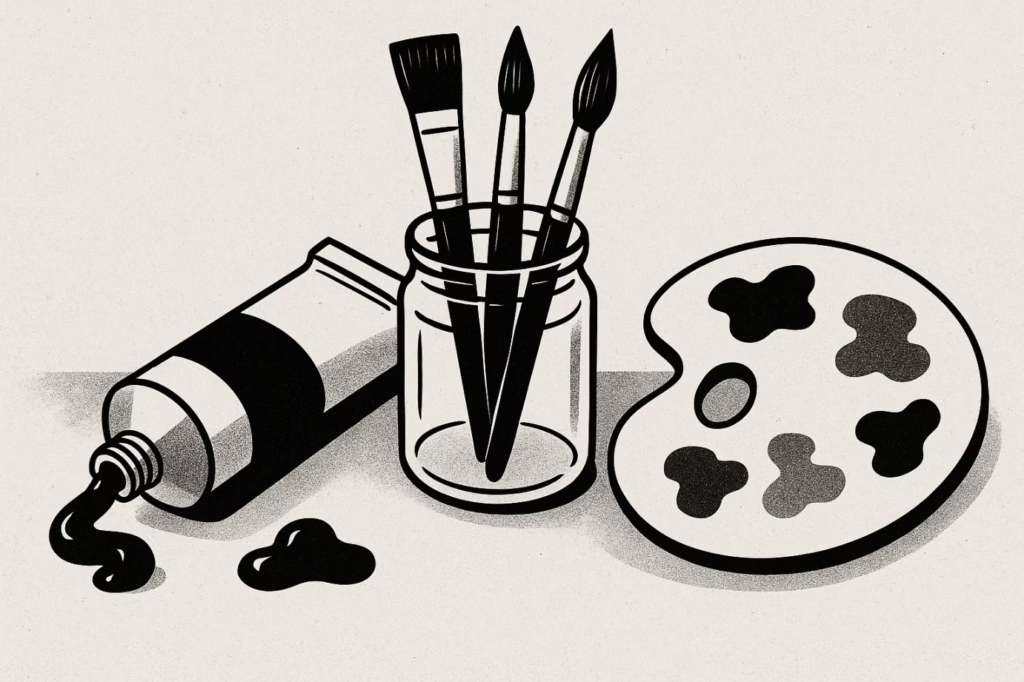Art history is filled with movements that challenged conventions, but some ventures into creative expression were so strange, they left even art critics scratching their heads. From vandalism disguised as philosophy to artists urinating on stage, these bizarre art movements pushed boundaries so far that decades later, we’re still trying to understand what they meant.
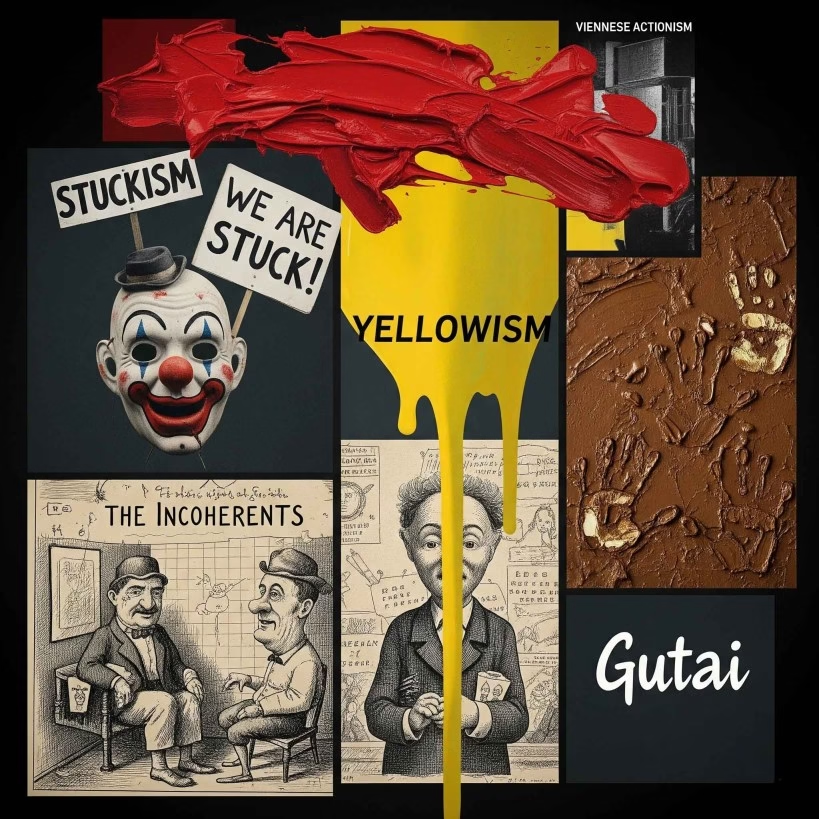
The Mystery Behind Art’s Strangest Chapters
Art has always been a medium for exploring the unseen, and 2025 will see a growing interest in spiritual and esoteric themes that echo these historical oddities. While today’s artists embrace technology and sustainability, some of history’s most perplexing art movements emerged from pure rebellion against everything art was supposed to be. To understand how these bizarre movements fit into the broader context, explore the evolution of art and history’s greatest movements.
What makes bizarre art movements “unexplainable”? It’s not just about being avant-garde or revolutionary. These bizarre art movements defied logical interpretation, created their own incomprehensible rules, and often left more questions than answers. Let’s dive into five of the most baffling artistic phenomena that somehow changed art forever.
1. Yellowism: When Vandalism Became Philosophy (2010-Present)
The Movement That Started with Destruction
On October 7, 2012, Vladimir Umanets entered the Tate Modern and defaced Mark Rothko’s Black on Maroon, sloppily signing the work, dating it, and inscribing the phrase “a potential piece of Yellowism.” While most people saw vandalism, Umanets claimed he was launching a revolutionary art movement.
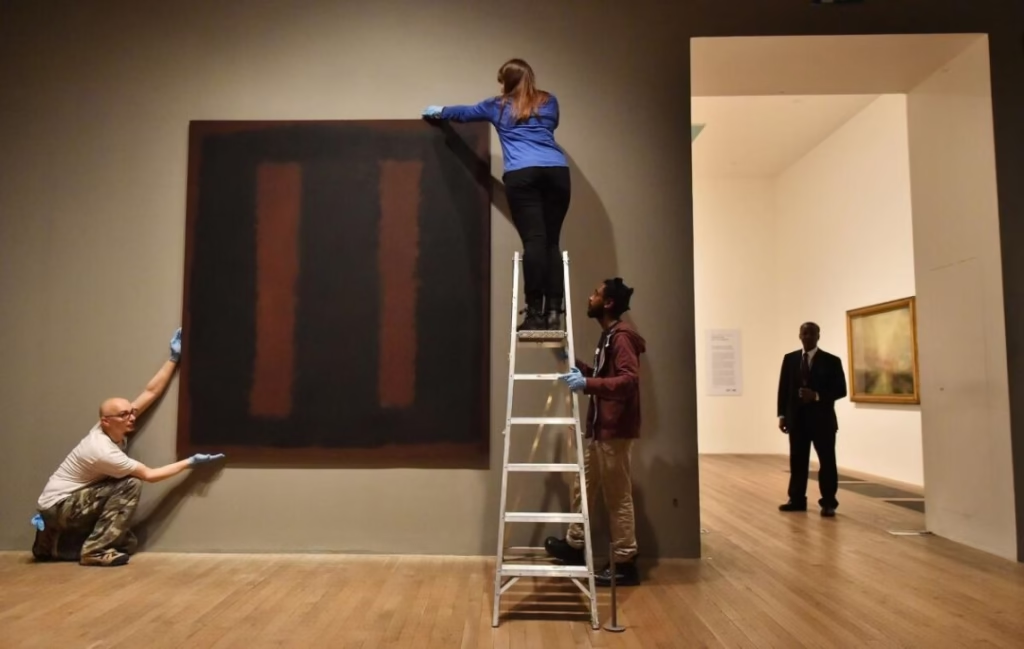
What exactly is Yellowism? Yellowism is an artistic movement run by two people – Vladimir Umanets and Marcin Lodyga. The movement began in Egypt in 2010 when the first exhibition was unveiled and has continued since, although grasping Yellowism is not an easy task. Apparently, in order for a piece of art to be considered as a part of Yellowism, it needs to be either displayed in a yellow gallery-like space or signed by a Yellowist.
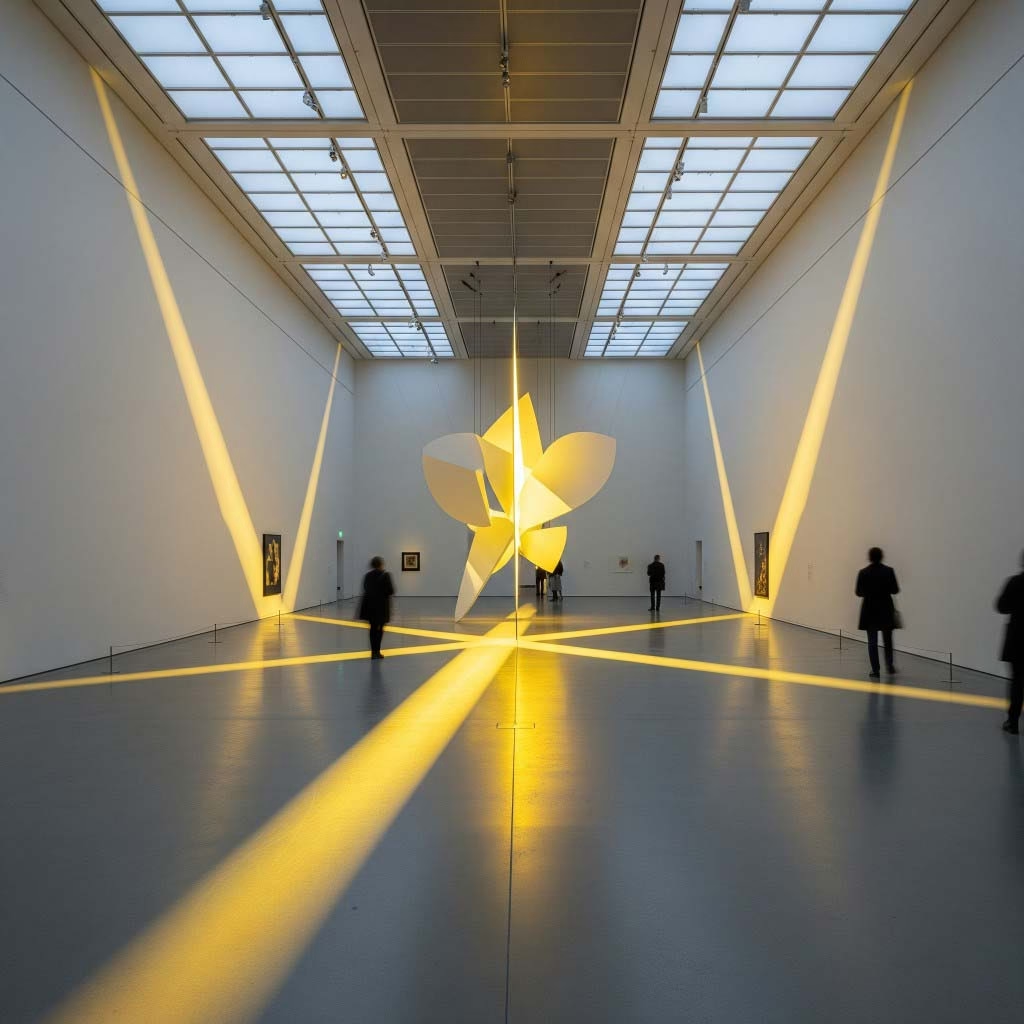
According to its founders, Yellowism is neither art nor anti-art but something else entirely – pieces of Yellowism are only about the color yellow and nothing more. The movement’s manifesto states that unlike art, which is open to interpretation, Yellowism allows no interpretation whatsoever.
The Bizarre Rules of Yellowism
One of the founders Umanets believes that art is open to interpretation, but Yellowist art is only about Yellowism. This circular logic is intentional – Yellowists believe they’ve created something entirely new that exists outside traditional artistic categories.
Umanets, and partner Marcin Lodyga, used the action as a call to a new art movement “yellowism”, declaring in their manifesto: ‘examples of Yellowism can look like works of art, but are not works of art … pieces of Yellowism are only about yellow and nothing more. All manifestations of Yellowism have the same sense and meaning and express exactly the same. In Yellowism, all the possible interpretations are reduced to one — are equalized, flattened to yellow.’
The Lasting Impact
Yellowism raises issues salient to those invested in both the ontology of art and social ontology more generally, forcing us to question what gives art meaning and who decides what qualifies as artistic expression. Though dismissed by many as pseudo-intellectual vandalism, Yellowism sparked serious academic discussion about artistic boundaries and the relationship between creator, institution, and audience. Among all bizarre art movements, Yellowism remains one of the most controversial.
2. Stuckism: The Art Movement Born from an Insult (1999-Present)
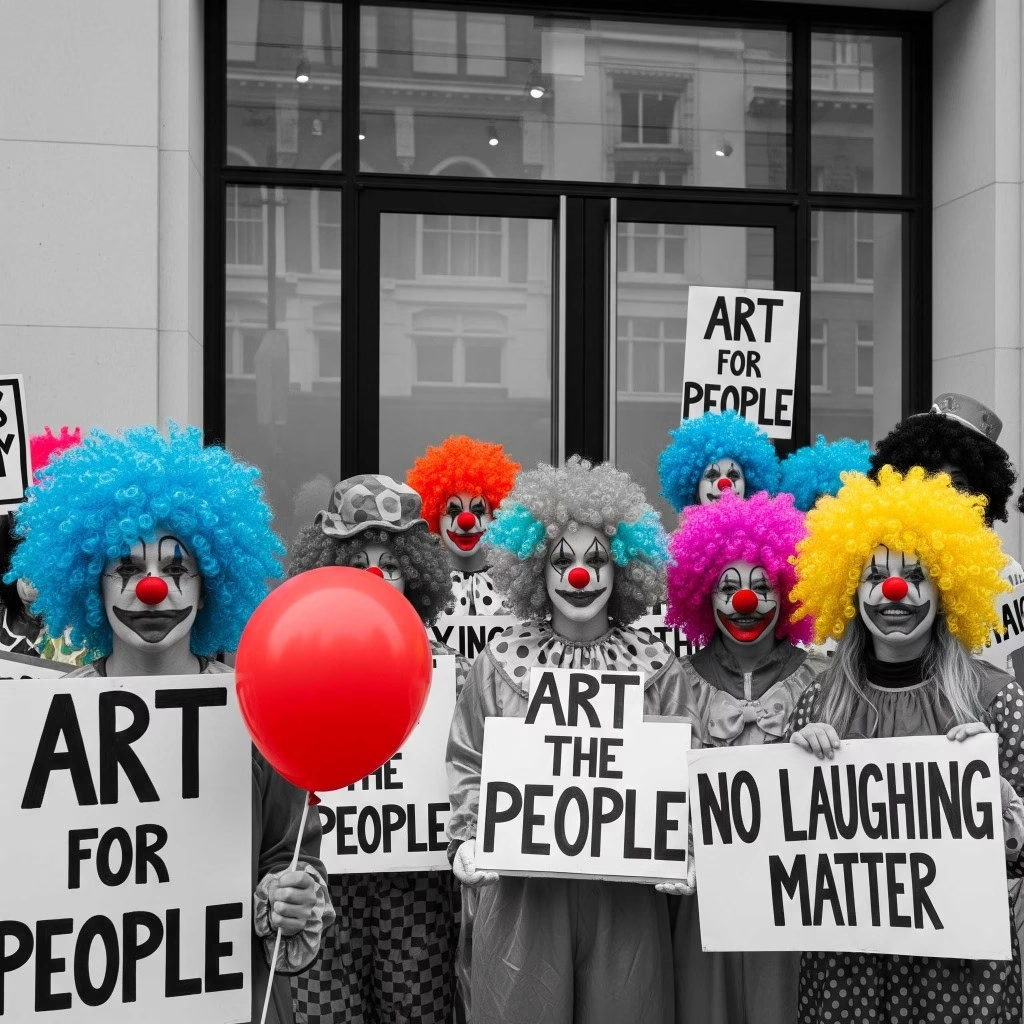
When “Stuck” Became a Badge of Honor
The name “Stuckism” was coined in January 1999 by Charles Thomson in response to a poem read to him several times by Billy Childish. In it, Childish recites that his former girlfriend, Tracey Emin had said he was “stuck! stuck! stuck!” with his art, poetry and music. Instead of taking offense, they turned this insult into the foundation of an international art movement.
Stuckism is an international art movement founded in 1999 by Billy Childish and Charles Thomson to promote figurative painting as opposed to conceptual art. The Stuckist Manifesto: The first one was The Stuckists, consisting of 20 points starting with “Stuckism is a quest for authenticity”, promoting figurative painting over conceptual art. They define themselves as “anti-anti-art,” which creates a philosophical puzzle that even supporters struggle to explain.
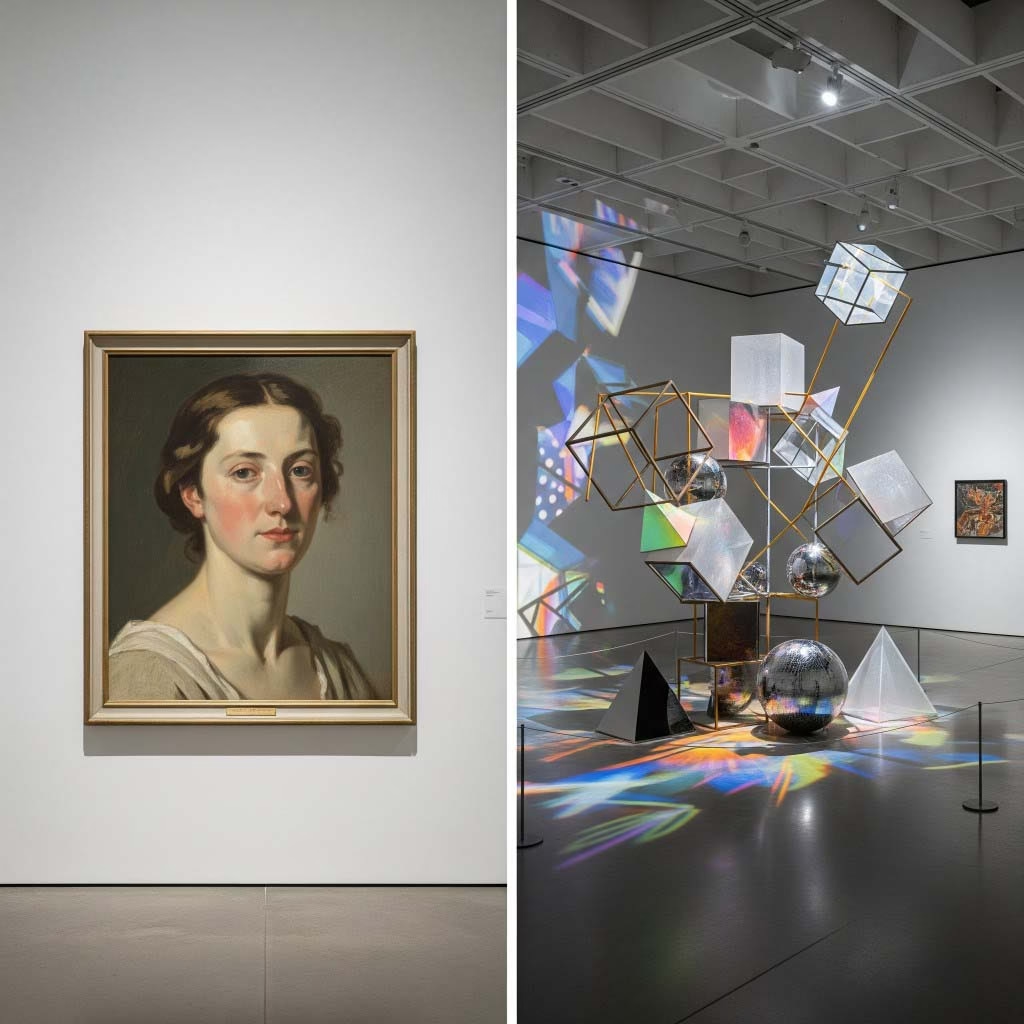
The Clown Protests and Gallery Wars
The group has demonstrated annually at Tate Britain against the Turner Prize since 2000, sometimes dressed in clown costumes. These theatrical protests aren’t just publicity stunts – they represent a genuine philosophical war between traditional painting and contemporary conceptual art.
Stuckists regularly oppose to the Turner Prize by holding demonstrations. On one occasion, they even dressed up as clowns. Over the years, these demonstrations have gained the movement a lot of media coverage.
Global Expansion: By May 2017, the initial group of 13 British artists had expanded to 236 groups in 52 countries, proving that the movement’s anti-establishment message resonated worldwide.
Why Stuckism Defies Easy Explanation
The movement’s core contradiction – being anti-modern while existing in the modern art world – creates an interpretive puzzle. Stuckists strongly believe that art is more than just dead animals and beds and thus oppose to modern art, minimal art, conceptual art and the like. Stuckists simultaneously reject contemporary art institutions while desperately seeking their validation through protests and manifestos.
3. Viennese Actionism: Where Art Became Visceral Nightmare (1960-1971)

Otto Muehl, Material Action No. 26 (Food Test), 1966, Vienna, Austria. Photo by Ludwig Hoffenreich via Godgave/Tumblr.
Blood, Urine, and the Search for Truth
Actionists were frustrated by what they saw as the limits and conventionality of abstract painting. Instead of paint they used organic materials such as blood, urine, milk, and entrails; instead of canvas they used naked bodies as ‘sites’ or ‘surfaces’ in their carefully controlled performances.
Its main four participants or “Actionists” as they were called were Günter Brus, Otto Muehl, Rudolf Schwarzkogler, and Hermann Nitsch. These artists created some of the most disturbing performance art ever documented. Often, brief jail terms were served by participants for violations of decency laws, and their works were targets of moral outrage.
The Most Notorious Performance
Muehl first performed his Piss Aktion, in which he stood naked and urinated into fellow actionist Gunter Brus’s mouth live on stage, at the Hamburg Film Festival in 1969, and it is remembered for its intentional and extreme violation of society’s norms. This performance exemplifies the movement’s commitment to shattering every social taboo.
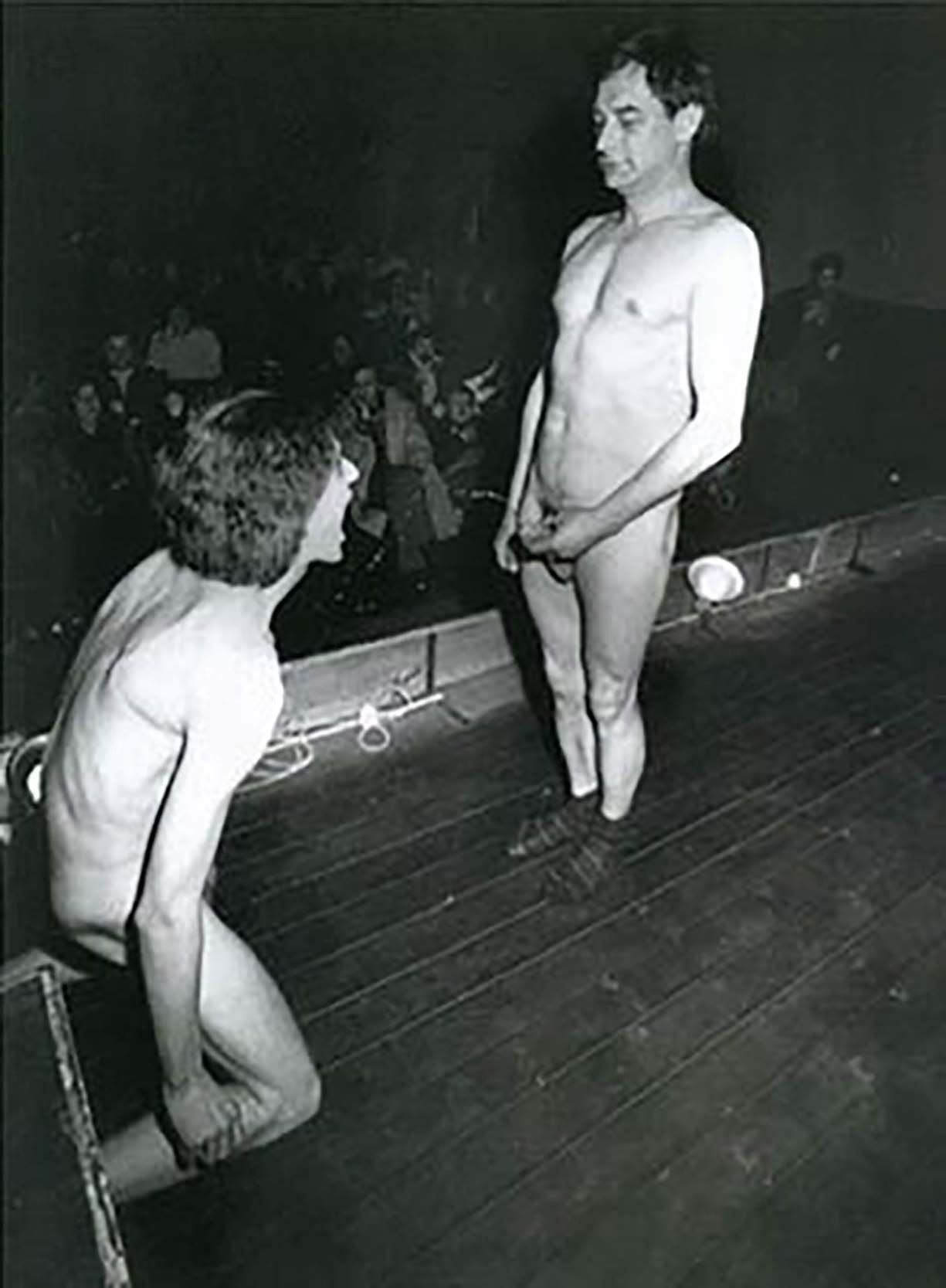
Otto Muehl and Günter Brus, Piss Aktion, 1969, Hamburg Film Festival, Hamburg, Germany. The Art Story.
The Psychological Context: Memories of life under the Nazis had a huge psychological impact on members of the group. They thought Austrians – especially the Viennese – were trying to suppress the role they had played in the crimes committed under the regime, and wanted to use their practices to force society to confront itself.
The Unexplainable Elements
What makes Viennese Actionism truly bizarre isn’t just its extreme content, but its practitioners’ conviction that these performances were necessary for societal healing. Viennese Actionism’s goal was not simply to use radical means of expression, but also to battle a much larger taboo: discussing Austria’s role in World War II.
Sigmund Freud was a touchstone for the group. It was in Vienna that psychoanalysis was born, and the Actionists echoed this symbolically by using their performances to exorcise their own traumatic experiences of WWII. The movement’s therapeutic claims remain unproven and largely incomprehensible to contemporary audiences, yet its influence on performance art is undeniable.
4. The Incoherents: When “Can’t Draw” Became the Point (1882-1886)
The First Anti-Art Movement
The Incoherents art movement was started in 1882 by a Persian writer and publisher named Jules Levy with a simple premise: what if people who couldn’t draw created art anyway?
Working in newspapers of the day and familiar with volume printing and understanding the public’s appetite for news, in an anti-establishment move, Levy had decided to throw a public ‘exhibition of drawings by people who could not draw’. Billed as a charity event, the contributors could present works in a public forum.
The Original Exhibition: This was the first ‘Incohérent’ art exhibition, held on July 13th 1882 on the Champs Elysées. Appropriately, in true Incohérents style, the Champs Elysées show was extravagantly lit by candlelight due to a gas outage.
Art History’s Forgotten Rebels
The Mona Lisa of the movement is quite literally, the Mona Lisa herself, enjoying her long clay pipe. Mona Lisa fumant la pipe created by the artist Sapeck (AKA Eugène Bataille) in 1883, is perhaps Les Incohérents’ most iconic identity piece.
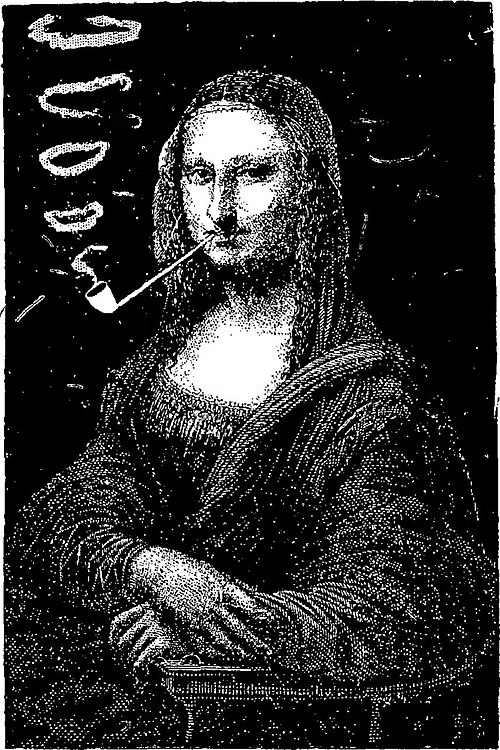
Source : Wikipedia
This crude alteration of da Vinci’s masterpiece predated both Dadaism and modern appropriation art by decades, yet the Incoherents have been largely forgotten by art history. The crude application of the pipe and its smoke rings, shatters the reverence of the historic image, and let’s face it, Sapeck’s subject is clearly far more relaxed than Leonardo’s.
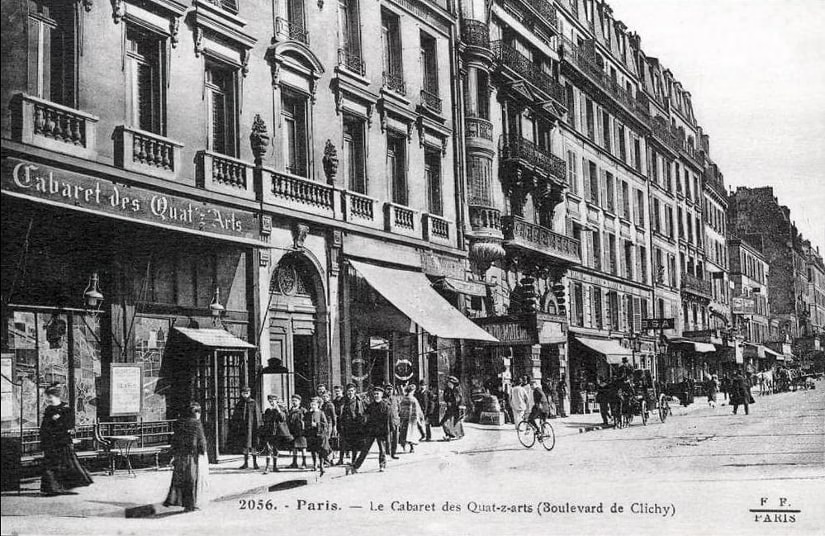
The Mystery of Their Disappearance
Unfortunately, in 1886, Levy became the target for criticism as people began to claim that he was using ‘The Incoherents’ for his own interests. Others too started using the name for their own endeavours – Incoherent cafes and magazines were established but in reality, they had nothing to do with the actual people taking part in the movement. Thus, Levy decided to end this movement.
The Incoherents vanished almost as mysteriously as they appeared, leaving behind questions about whether they were genuinely revolutionary or simply entertaining dilettantes.
5. Gutai: Japanese Artists Who Destroyed to Create (1954-1972)

Art Through Destruction and Embodiment
The Gutai Bijutsu Kyokai (Gutai Art Association) was formed in 1954 in Osaka by Yoshihara Jiro, Kanayama Akira, Murakami Saburo, Shiraga Kazuo and Shozo Shimamoto. The word has been translated into English as ’embodiment’ or ‘concrete’.
Gutai artists believed in creating art through direct physical engagement with materials, often involving destruction, bodily interaction, and ephemeral performances that challenged Western notions of permanent art objects.
The Mud Performance That Changed Everything
Shiraga’s Challenge to the Mud 1955, in which the artist rolled half naked in a pile of mud, remains the most celebrated event associated with the group. This performance predated many Western performance art movements by years and established the movement’s philosophy of direct material engagement.
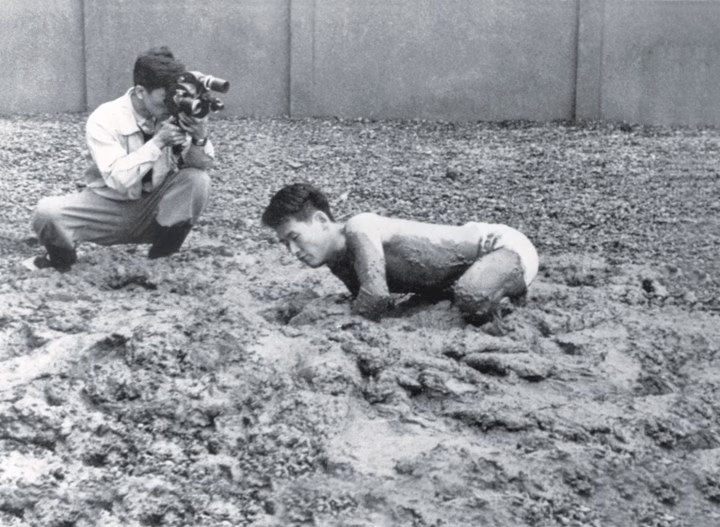
In their early public exhibitions in 1955 and 1956 Gutai artists created a series of striking works anticipating later happenings and performance and conceptual art.
The Cultural Translation Problem
The art historian Yve-Alain Bois has said that ‘the activities of the Gutai group in the mid 1950s constitute one of the most important moments of post-war Japanese culture’, yet the movement remains poorly understood in Western contexts.
The Unexplainable Element: Gutai’s emphasis on “embodiment” and the relationship between spirit and matter draws from Japanese philosophical traditions that don’t translate easily into Western art theory, leaving many of their works and intentions mysterious to international audiences. The group dissolved in 1972 following the death of Yoshihara.
Why These Bizarre Art Movements Still Matter in 2025
Connections to Contemporary Trends
While a demand for immersion might persist, there will be a continued departure from such formats that are merely technology-driven. Instead, there seems to be a renewed emphasis on painting and its capacity for storytelling, echoing Stuckism’s anti-digital stance decades earlier.
These bizarre art movements anticipated many trends we see today:
- Stuckism’s anti-digital stance echoes current concerns about AI in art
- Yellowism’s reductive philosophy parallels minimalist revivals where less is more in 2025. Clean lines, simple forms, and muted colors are offering a soothing counterbalance to our fast-paced lives
- Viennese Actionism’s body-based work prefigured contemporary performance art
- The Incoherents’ amateur aesthetic connects to today’s democratization of art through social media
- Gutai’s material experimentation influences current sustainable art practices where artists are using recycled materials and natural dyes, soil and water
The Importance of Artistic Mysteries
Not every art movement needs to be fully comprehensible. These bizarre chapters in art history remind us that creativity often operates beyond logical explanation. Bizarre art movements challenged their societies, confused critics, and sparked debates that continue today.
Art has always been a medium for exploring the unseen, and sometimes the most powerful art is that which refuses to explain itself. Just as controversial modern works like the Feast of Dionysus painting from the 2024 Olympics sparked viral debates, these historical movements remind us that art’s capacity to provoke remains unchanged. In our current moment where cultural fusion is one of the most exciting art tendencies of the moment, where artists are proudly blending cultures and using patterns, symbols, and stories from other parts of the world, these historical movements remind us that art’s power often lies in its mystery.
The Takeaway: Embracing the Unexplained
These bizarre art movements teach us that art’s power sometimes lies not in what it explains, but in what it leaves mysterious. In our data-driven, analyzed-to-death cultural moment, perhaps we need more art that simply refuses to make sense.
As you explore galleries, read art criticism, or create your own work, remember that some of history’s most influential bizarre art movements began as complete puzzles. Sometimes the question is more important than the answer.
The art world of 2025 continues to grapple with questions these bizarre art movements first posed: What qualifies as art? Who decides artistic value? Can destruction be creation? These most bizarre art movements proved that art’s greatest power might be its ability to perplex, provoke, and persist in our collective consciousness long after their creators intended.
Whether through a yellow signature on a masterpiece, a clown protest outside a prestigious gallery, or rolling naked in mud, these artists remind us that the most memorable art often defies explanation—and that’s exactly why these bizarre art movements matter. For a comprehensive understanding of how these movements fit within art history’s broader evolution, these unconventional chapters prove that art’s most powerful moments often emerge from its most inexplicable impulses.

